All Among the Barley – Melissa Harrison (Bloomsbury, 2018)
 This is Melissa Harrison’s third novel. With All Among the Barley and its two predecessors, Clay and At Hawthorn Time, she is establishing herself as one of the country’s foremost nature writers. All Among the Barley is set in rural Suffolk, the county to which Harrison has recently moved from her former home in south London. The year is 1933 and Edie Mather has just left school having recently turned fourteen. She is a bright child struggling to find a role in life that doesn’t involve simply becoming a farmer’s wife and a regular producer of children. She is beguiled by a newcomer to the village, Constance FitzAllen, who is conducting research into rural customs. But Constance has an agenda of her own: she is a closet supporter of the British Union of Fascists and dreams of a return to a rural idyll, the kind of ideas later expressed by Henry Williamson in his A Solitary War.
This is Melissa Harrison’s third novel. With All Among the Barley and its two predecessors, Clay and At Hawthorn Time, she is establishing herself as one of the country’s foremost nature writers. All Among the Barley is set in rural Suffolk, the county to which Harrison has recently moved from her former home in south London. The year is 1933 and Edie Mather has just left school having recently turned fourteen. She is a bright child struggling to find a role in life that doesn’t involve simply becoming a farmer’s wife and a regular producer of children. She is beguiled by a newcomer to the village, Constance FitzAllen, who is conducting research into rural customs. But Constance has an agenda of her own: she is a closet supporter of the British Union of Fascists and dreams of a return to a rural idyll, the kind of ideas later expressed by Henry Williamson in his A Solitary War. 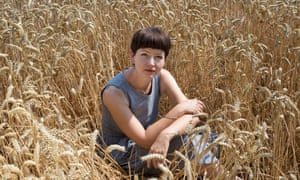 But other influences, older, magical beliefs which are still adhered to be many in her village, are at work in Edie’s life. But everywhere, unbroken and ever-lasting, the surrounding countryside teems with animal and plant life, every nuance of which is lovingly portrayed by Harrison.
But other influences, older, magical beliefs which are still adhered to be many in her village, are at work in Edie’s life. But everywhere, unbroken and ever-lasting, the surrounding countryside teems with animal and plant life, every nuance of which is lovingly portrayed by Harrison.
The Great Level – Stella Tillyard (Chatto & Windus, 2018)
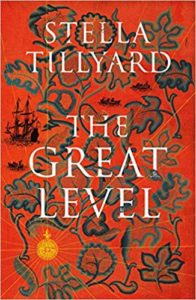 Stella Tillyard’s novel is set in the Fens during the seventeenth century when, under the guidance of Dutch civil engineers, huge swathes of meres, marshes and reed beds were drained for large-scale agriculture. With a blow as devastating for the common people of East Anglia as the Highland Clearances were for Scotland, a whole way of life dating back to pre-Roman times was swept away. Jan Brunt is part of this process; a Dutch engineer employed to traverse the Great Level by boat and plot how best it can be drained. Brunt meets and falls in love with a local woman, Eliza, from whom he comes to learn about the traditional life of the watery Fens. This is a work of epic sweep and vivid imagination.
Stella Tillyard’s novel is set in the Fens during the seventeenth century when, under the guidance of Dutch civil engineers, huge swathes of meres, marshes and reed beds were drained for large-scale agriculture. With a blow as devastating for the common people of East Anglia as the Highland Clearances were for Scotland, a whole way of life dating back to pre-Roman times was swept away. Jan Brunt is part of this process; a Dutch engineer employed to traverse the Great Level by boat and plot how best it can be drained. Brunt meets and falls in love with a local woman, Eliza, from whom he comes to learn about the traditional life of the watery Fens. This is a work of epic sweep and vivid imagination.
The Gloaming – Kirsty Logan (Harvill Secker, 2018)
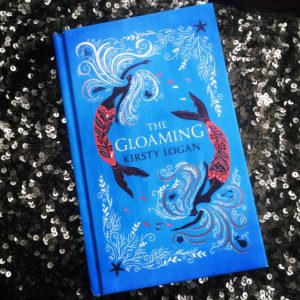 Mara lives on a remote Scottish island; a place of rock, heather and the ever-present sea. She and her family struggle to make a living from their precarious strip of land, The sea wields a constant threat to take back what was once its own. When Mara’s younger brother dies, an accident for which she feels responsible, she retreats inside herself. She continues to take part in the everyday life of the island but remains emotionally detached from it. But the sea provides and solace arrives in Mara’s life in the form of Pearl, who works as a fairground mermaid act. The two become lovers. Pearl claims to be a fake, but Mara suspects she is something more than that. Logan’s The Gloaming is a powerful evocation of landscape, folklore and everyday magic.
Mara lives on a remote Scottish island; a place of rock, heather and the ever-present sea. She and her family struggle to make a living from their precarious strip of land, The sea wields a constant threat to take back what was once its own. When Mara’s younger brother dies, an accident for which she feels responsible, she retreats inside herself. She continues to take part in the everyday life of the island but remains emotionally detached from it. But the sea provides and solace arrives in Mara’s life in the form of Pearl, who works as a fairground mermaid act. The two become lovers. Pearl claims to be a fake, but Mara suspects she is something more than that. Logan’s The Gloaming is a powerful evocation of landscape, folklore and everyday magic.
The Silence of the Girls – Pat Barker (Hamish Hamilton, 2018)
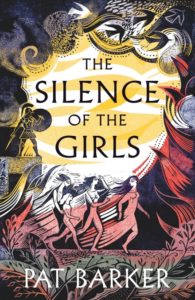 The Silence of the Girls is Pat Barker’s retelling of The Iliad, Homer’s poem of the Trojan War, in the form of a novel. But Barker shifts the focus of Homer’s narrative from the actions of the male warriors to the story of those who exist at the margins but are given no voice of their own: the women. The fate of the women on the defeated side in the Trojan War, as in countless wars before and since, is to see their men and children slaughtered and then face rape and either brutal murder or sexual enslavement. Barker is faithful to Homer’s narrative; her only change is to give voice to the poem’s voiceless characters, Andromache, Briseis and the other women.
The Silence of the Girls is Pat Barker’s retelling of The Iliad, Homer’s poem of the Trojan War, in the form of a novel. But Barker shifts the focus of Homer’s narrative from the actions of the male warriors to the story of those who exist at the margins but are given no voice of their own: the women. The fate of the women on the defeated side in the Trojan War, as in countless wars before and since, is to see their men and children slaughtered and then face rape and either brutal murder or sexual enslavement. Barker is faithful to Homer’s narrative; her only change is to give voice to the poem’s voiceless characters, Andromache, Briseis and the other women.  The Silence of the Girls seems to exist in a very different realm from Barker’s earlier Regeneration Trilogy. The one focuses on women in the ancient world and the other on men in the Great War, but what links the two is Barker’s searing exposition of the de-humanising futility of war. Her feminist retelling of The Iliad also prompts one to return to Regeneration to appreciate that work, and its female characters, in a different light.
The Silence of the Girls seems to exist in a very different realm from Barker’s earlier Regeneration Trilogy. The one focuses on women in the ancient world and the other on men in the Great War, but what links the two is Barker’s searing exposition of the de-humanising futility of war. Her feminist retelling of The Iliad also prompts one to return to Regeneration to appreciate that work, and its female characters, in a different light.
The Tunnel Through Time: A New Route for an Old London Journey – Gillian Tindall Chatto & Windus, 2018)
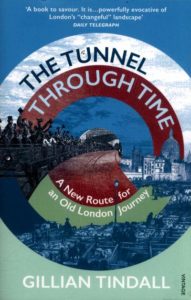 The fascinating stories revealed by Gillian Tindall’s forensic delving beneath the surface of London’s streets have been noted in this blog before. The central east-west section of the Crossrail project has attracted Tindall’s attention and enabled her to apply her considerable knowledge of London’s history to a chain of newly-unearthed treasures at the station extensions and other engineering works along the way. The Crossrail route is not a new one but is proximate to key road links going back as far as Roman times, indeed it passes through both Watling Street and Ermine Street along its course. Layer by layer Tindall exposes the detail of two millennia of history along this east-west axis. Her particular talent is not just to tell the reader about buildings, roads and rivers, though she does that very well indeed, but she succeeds in bringing to life the stories generation upon generation of Londoners.
The fascinating stories revealed by Gillian Tindall’s forensic delving beneath the surface of London’s streets have been noted in this blog before. The central east-west section of the Crossrail project has attracted Tindall’s attention and enabled her to apply her considerable knowledge of London’s history to a chain of newly-unearthed treasures at the station extensions and other engineering works along the way. The Crossrail route is not a new one but is proximate to key road links going back as far as Roman times, indeed it passes through both Watling Street and Ermine Street along its course. Layer by layer Tindall exposes the detail of two millennia of history along this east-west axis. Her particular talent is not just to tell the reader about buildings, roads and rivers, though she does that very well indeed, but she succeeds in bringing to life the stories generation upon generation of Londoners.
Bird Cottage – Eva Meijer (Pushkin Press, 2018)
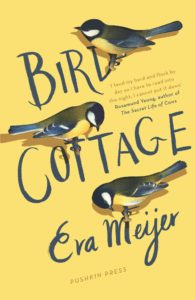 Eva Meijer is a Dutch writer and has taken as the subject of her novel the life of the British violinist, Gwendolen Howard. In the 1940s, at the age of forty-four, ‘Len’ Howard gave up her life as a concert performer and moved into a tiny cottage in Sussex. Her aim was to study the birds that visited her garden, something she then did for the remainder of her life. Within the bounds of the known facts about Len, Meijer presents a fictionalized account of her life. Len is single-mindedly obsessed with birds and devotes her attention to them almost to the exclusion of all human contact. But Meijer does not judge, she merely presents us with a life, the story of which is both uplifting and deeply moving. Despite her dedication, Len was never taken seriously by the scientific community and the two bird handbooks she wrote are long out of print.
Eva Meijer is a Dutch writer and has taken as the subject of her novel the life of the British violinist, Gwendolen Howard. In the 1940s, at the age of forty-four, ‘Len’ Howard gave up her life as a concert performer and moved into a tiny cottage in Sussex. Her aim was to study the birds that visited her garden, something she then did for the remainder of her life. Within the bounds of the known facts about Len, Meijer presents a fictionalized account of her life. Len is single-mindedly obsessed with birds and devotes her attention to them almost to the exclusion of all human contact. But Meijer does not judge, she merely presents us with a life, the story of which is both uplifting and deeply moving. Despite her dedication, Len was never taken seriously by the scientific community and the two bird handbooks she wrote are long out of print.
